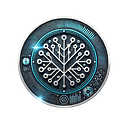You're absolutely right—when working with large datasets, like movies from multiple cameras, a single knowledge graph might not handle the detailed, high-dimensional analysis and data you need. While knowledge graphs are excellent for managing relationships and metadata, when it comes to deep comparative analysis or discovery, additional data structures like vector databases (chromaDB) are often needed.
That said, knowledge graphs themselves can store vectors (e.g., embeddings) on nodes or relationships, allowing you to perform semantic searches and integrate feature data directly within the graph. For example, Neo4j can store and index vector data for efficient similarity searches, so you don’t have to rely solely on external vector databases.
In addition to storing vectors, knowledge graphs can leverage Graph Data Science algorithms such as centrality or clustering to find patterns and relationships within the data. These algorithms can provide insights into which movies are most central in your network or group similar movies based on their features, offering another layer of analysis that combines both the graph structure and the granularity that is needed.
